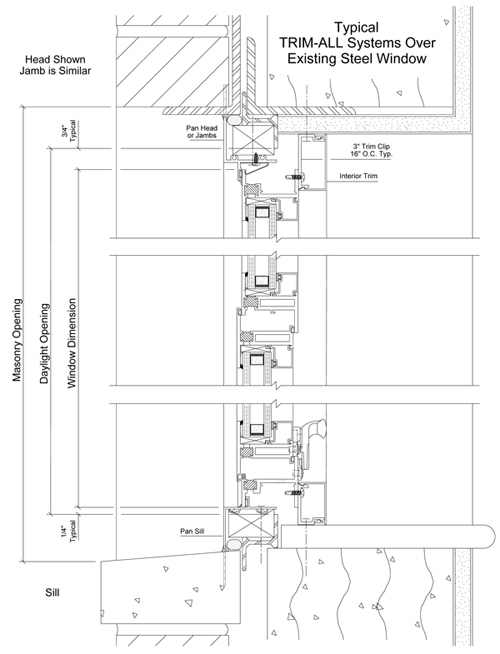Window Replacement Solutions for Commercial and Institutional Buildings
Modernizing existing buildings with new manufactured windows to improve energy efficiency, lower maintenance, and enhance design.
This course is no longer active
Sponsored by Pella and EFCO
- T-Subframe. The T-subframe is a variation of the standard subframe and is most suitable for applications where metal windows are being replaced. The aluminum T-shaped subframe is used to conceal the existing metal window frames, allowing them to be left in place. It also acts as a receptor for the new pocket style window unit and secures the unit in place. Unlike the standard subframe, however, the new window is installed flush with the face of the T-subframe creating a different profile and shadow line on the building. Similar to the standard subframe, it allows for interior installation that reduces labor costs and eliminates
the need for exterior scaffolding or lifts.
 |
Installation details drawing for aluminum panning system Drawings courtesy of EFCO, a Pella Company |
- Receptor and Subsill. In situations where the existing frame is removed, then the use of a simple window unit receptor and subsill may be appropriate. Typically, receptors are used in multistory buildings requiring installation from the interior or when a more robust installation method is desired. First, the subsill is anchored to the sill of the existing window opening. Then the metal receptors are anchored to the opening at the head and jambs. Finally, the new window is installed on the top of the subsill and within the receptor system from the interior. Together, they act to assure that the integrity of the window unit and its installation is maintained.
Paying attention to the details of a particular application, evaluating the conditions and following through on the type of window system selected will help to assure that the building and its windows will perform for many more years to come.
Originally published in Architectural Record
Originally published in January 2012









